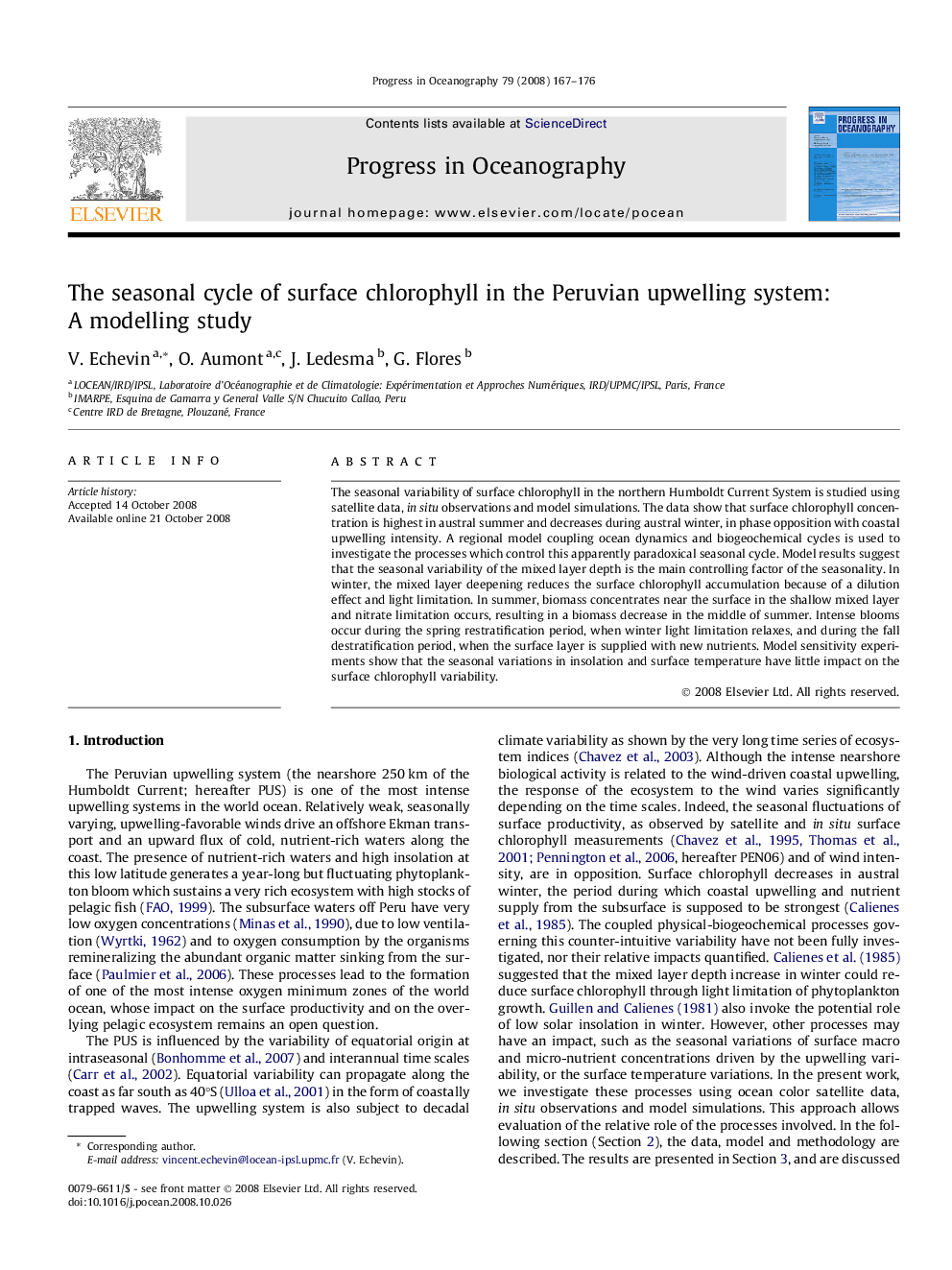| Article ID | Journal | Published Year | Pages | File Type |
|---|---|---|---|---|
| 4553629 | Progress in Oceanography | 2008 | 10 Pages |
The seasonal variability of surface chlorophyll in the northern Humboldt Current System is studied using satellite data, in situ observations and model simulations. The data show that surface chlorophyll concentration is highest in austral summer and decreases during austral winter, in phase opposition with coastal upwelling intensity. A regional model coupling ocean dynamics and biogeochemical cycles is used to investigate the processes which control this apparently paradoxical seasonal cycle. Model results suggest that the seasonal variability of the mixed layer depth is the main controlling factor of the seasonality. In winter, the mixed layer deepening reduces the surface chlorophyll accumulation because of a dilution effect and light limitation. In summer, biomass concentrates near the surface in the shallow mixed layer and nitrate limitation occurs, resulting in a biomass decrease in the middle of summer. Intense blooms occur during the spring restratification period, when winter light limitation relaxes, and during the fall destratification period, when the surface layer is supplied with new nutrients. Model sensitivity experiments show that the seasonal variations in insolation and surface temperature have little impact on the surface chlorophyll variability.
